Snakes and Ladders
Within the RAS Collections we have two versions of a Snakes and Ladders game. This game, now popular in many countries, is of Indian origin dating back to the 13th century. Our more decorative version is that donated by Henry Dundas Robertson on 16 April 1831. It is on paper mounted on cloth, 84 x 90 cm, and finely drawn with figures and objects by a Maharashtra artist. The painting dates to around 1800.
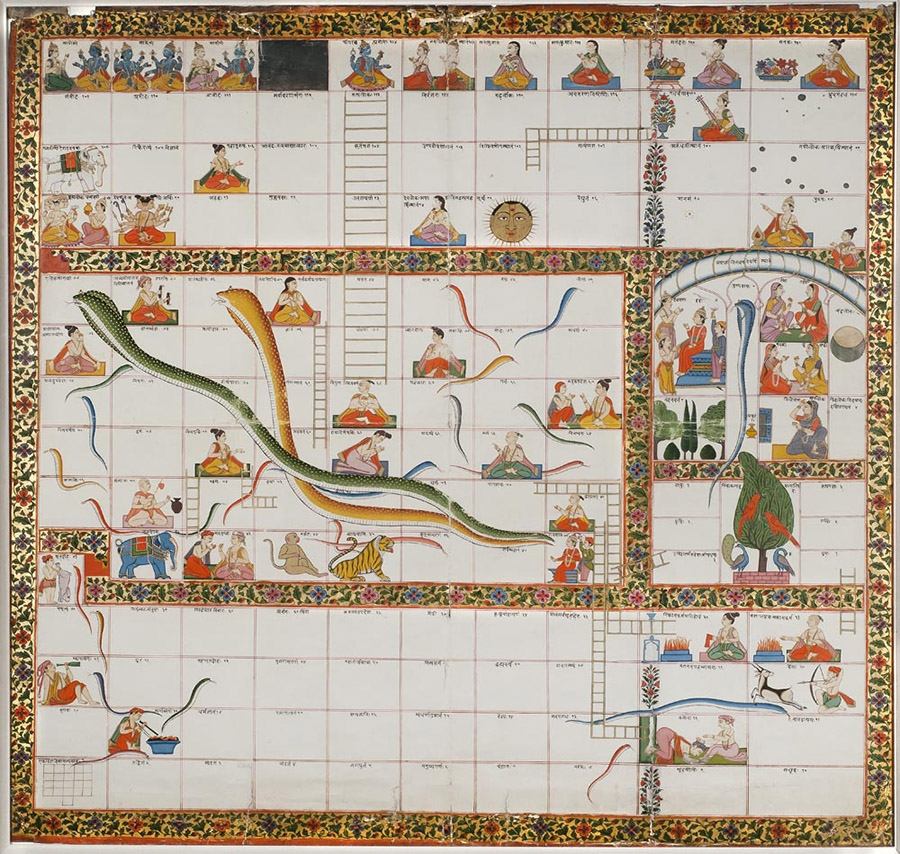
In 1917, F.E. Pargiter wrote about this game in the Journal of the Royal Asiatic Society. In the archives we hold a corrected proof copy of the article. Here is the opening page:
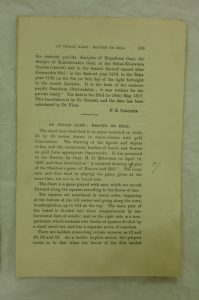
In his article Pargiter explains how the game is played with ivory men and dice, but that these were no longer in the possession of the Society. The board is divide into 124 squares all numbered in serial order from the bottom left. He writes how there is an accompanying paper which is a diagram of the chart and on which every square has one or more names in Sanskrit, with however some mistakes. The game is seen as a representation of man’s upward course in religious life – the first square representing the hells and, in playing, a participant is aiming for emancipation into Supreme Brahma at the top. The ascent can be accelerated by landing on a square with a ladder (always a good virtue square) which can then be climbed. The reverse happens with the snake (on ‘bad’ squares). There is a side section which is accessed from square 31 which seems to signifies sacrifice, the fires and rites, or from square 48 which relates to persons of royal birth. Such characteristics, Pargiter suggests, “may lead a man into the pursuit of a self-seeking existence, which may attain to the gods, heaven, and the heavenly nectar, but not to the final emancipation into the Supreme Brahma; and there appears to be no escape therefrom back into the main course of true spiritual development”.
This is a truly beautiful game/picture and one that is much admired by visitors to the Reading Room where it currently hangs. But we also have another version of the game and as I was sorting through the archival material this week, I came across some correspondence concerning it.
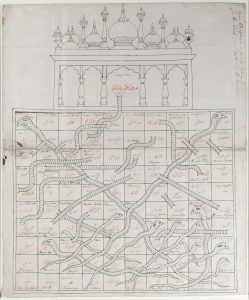
This game was previously in the possession of John Staples Harriott and was probably by an Ajmer artist as the architecture reflects the Mughal type as in Ajmer. Inscribed in ink in Harriott’s hand is: “Gyan Chapar – a game played with Dice – in northern Hindustan. No.22″. In 1915, Henry Beveridge studied the game and then sent two letters to Oliver Codrington, the then RAS Honorary Librarian, in which he explains what he has discovered. In the first, on 25 July 1915, he writes of examining the game and of sending a translation of the Persian note on the diagram.
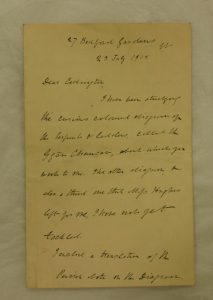
It seems, at this time that Snakes and Ladders was not the well-known game that it is today. Beveridge writes:
“The curious thing is that Ellis of the India Office says that he remembers that a children’s game was introduced in this country in which there were representations of serpents & ladders, and Mr Miller of the same office remembers seeing a lithograph of the Diagram. He cannot now lay hands on it but he says it came from India.”
We still have the accompanying translation which gives detailed instructions of using six cowrie shells to decide the movement of the participants (and not dice as Harriott suggested) but gives no information about the snakes and ladders.
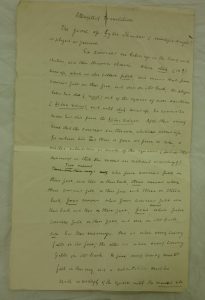
By 31st July Beveridge had undertaken more research including using the Reading Room at the British Museum, for which he enclosed his Reader’s Slip so Codrington would know which Volume he had consulted.

The volume, Indian Miscellania, contained ” no less than three diagrams of the game, and is full of serpents and ladders”. He explains how the ladders enable the lucky players to escape from the serpents. Beveridge had also consulted Blumhardt’s Catalogue of Hindustani printed books at the British Museum and writes on his letter of finding also a Tamil version and a Hindustani one.
It was fantastic to come across this information and thus learn more about our Collections and research that has been undertaken on them. If you are visiting the RAS, please do take the opportunity to examine these games for yourself.
